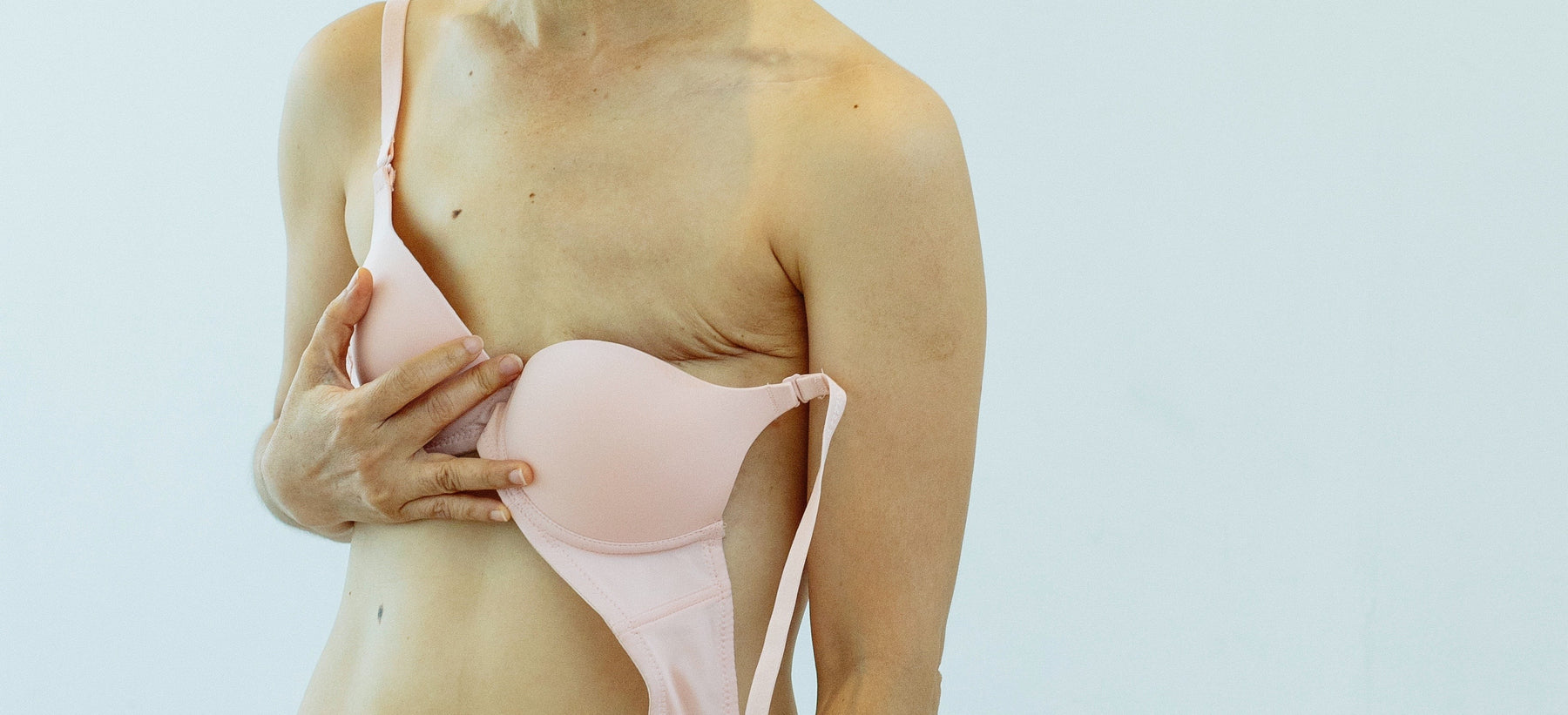for orders over $99
for orders over $99

After a mastectomy, many women opt to undergo reconstructive surgery to restore the breast to a normal shape, symmetry, and size. Generally speaking, there are two categories of reconstruction: flap reconstruction or implant-based reconstruction. With implant-based reconstruction, breast implants will be used to form the new breast mound(s). Flap reconstruction, on the other hand, uses tissue from another part of your body.
Which one you and your doctor choose will depend on several factors like your body type and what type of mastectomy you’ve had. Those who opt for implant-based reconstruction may have a few questions about everything, including the role that tissue expanders play. We’re here to break down the basics of tissue expanders and what you can expect during the implant reconstruction process.
Reconstruction with implants can be done during your mastectomy or after you’ve already healed.
Most commonly, women decide to have the expanders put in at the same time as the mastectomy procedure. This is known as immediate reconstruction. Benefits to this include fewer surgeries overall and a better cosmetic result.
Implant reconstruction can be a lengthy process by itself. Delayed reconstruction increases the total time needed for reconstruction and recovery. However, the option may be the best choice if additional cancer therapy is needed after your mastectomy or if you just need more time to consider your reconstruction options.

A tissue expander is a medical device that is used to expand the tissue in the breast to make room for an implant. The tissue expander itself is a silicone pouch with an external port that can be filled with saline solution. Newer expanders may be filled with carbon dioxide.
Tissue expanders are temporary and will be removed in a second procedure in which your actual implants are put in.
The tissue expander can be placed in one of two places: under your pectoralis muscle (submuscular placement) or over the pectoralis muscle (prepectoral placement).
Several weeks after your initial mastectomy and expander implant, you will return to your plastic surgeon to begin the expansion process. Over the course of two to six months, saline (or carbon dioxide, depending on your implant type) will be gradually added to your expanders. This will expand the tissue slowly over time to make room for your permanent implants.
Once your expanders have reached the desired shape and size, you will undergo a second procedure to remove the expanders and place your permanent implants.
Unfortunately, many women report that tissue expanders cause some degree of pain and discomfort. Not only will you have just undergone a major procedure to remove your breast, but now the nearby muscle and tissue will be stretched out.
After each expansion, you’ll likely feel some pain, discomfort, or tenderness for several days. Oftentimes, basic pain-relieving methods can alleviate the discomfort. Your doctor will give you more information on what you can and cannot do, but some examples of pain remedies include:

Like any medical procedure, there are risks associated with tissue expanders and implants. The two most common are:
Though there are tissue expander risks, the practice is considered safe and has been successfully completed thousands of times by surgeons without any issue.
Women undergoing chemotherapy are often still candidates for implant reconstruction. The process may take a little longer, as certain chemotherapies can delay your body’s healing. Your doctor may also decide to surgically insert your permanent implants when you are feeling better.
Radiation, on the other hand, may cause complications or interfere with your implant reconstruction. If you have or are planning on undergoing radiation, your surgeon and doctors will assess whether or not implant reconstruction is the right choice for you. This is often done on a case-by-case basis.
Yes. Breast implants do not have to be permanent. In fact, many women decide years later— for a myriad of reasons— that they no longer want breast implants. The solution to this is breast implant removal surgery, known as explant surgery.
Though explant surgery is by no means a walk in the park and comes with its own risks and a recovery process, many women take comfort knowing that implants aren’t a life-long commitment. If, for whatever reason, breast implants end up causing discomfort or other issues, you have options.
Making choices about your breast reconstruction isn’t always easy, whether it’s before or after your mastectomy. It’s important to consult with your medical team in addition to doing your own research to make an informed decision. Knowing all of your options including the pros, cons, and risks involved can help you make choices confidently.